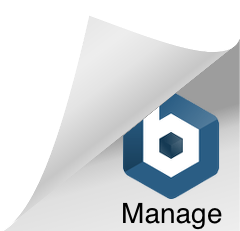 Regardless of the popularity of social media, texting and other forms of messaging e-mail still remains the number one tool for communication in the business world. According to one recent report “…e-mail remains a significantly more effective way to acquire customers than social media—nearly 40 times that of Facebook and Twitter combined (exhibit). That’s because 91 percent of all US consumers still use e-mail daily, and the rate at which e-mails prompt purchases is not only estimated to be at least three times that of social media, but the average order value is also 17 percent higher.” E-mail is so prevalent in our society that more than 81% of people are checking it outside of work and a major Presidential candidate continues to find herself in hot water as a result of her use (or mis-use?) of the medium.
Regardless of the popularity of social media, texting and other forms of messaging e-mail still remains the number one tool for communication in the business world. According to one recent report “…e-mail remains a significantly more effective way to acquire customers than social media—nearly 40 times that of Facebook and Twitter combined (exhibit). That’s because 91 percent of all US consumers still use e-mail daily, and the rate at which e-mails prompt purchases is not only estimated to be at least three times that of social media, but the average order value is also 17 percent higher.” E-mail is so prevalent in our society that more than 81% of people are checking it outside of work and a major Presidential candidate continues to find herself in hot water as a result of her use (or mis-use?) of the medium.
But, no offense, you’re using it badly. At least most people I know are. And I used to also. But I think I’ve gotten better. That because for over twenty years I’ve spent a significant part of my day on-email so I’ve learned a few things that have helped me improve my daily e-mail usage. And I’d like to share them here.
Keep it short. If you can’t say it in just two or three sentences then it probably shouldn’t be in an e-mail. This is 2015, the age of BuzzFeed, Business Insider and 300 word ‘snackable’ blogs. No one has the patience to read through your long e-mail. Get on the phone.
Always ask to attach. Never send someone an attachment unless they’re expecting it. Attachments slow down email because of their size. And they create a potential security risk.
Reply. If someone that you know says hello to you on the street you say hello back, right? So why don’t you quickly reply to someone you know who e-mails you? Just a quick acknowledgement – “thanks, not at this time” or “swamped, will get back to you soon” makes all the difference in the world as opposed to the virtual smack in the face to that person you know who when you don’t even recognize their existence. This takes 30 seconds. It makes a difference.

No negative emotions. If you’re angry, hurt, frustrated, or experiencing any other emotion that will reflect negatively on you and your relationship keep it out of an e-mail. And for God’s sake…no profanities. I, like everyone else, have sent countless e-mails to people that I’d like to have back. Regardless of Gmail’s latest advancement, you really can’t un-send an e-mail. And God-forbid if that angry reply you wrote at 2AM is copied to others. You’ll regret it come 9AM. Save it as a draft and read it 6 hours later before sending. Here’s what will happen: you won’t send it.
Don’t make me feel like I’m on a list. Sometimes I get an e-mail from someone that’s addressed to the sender because the sender created a list in Outlook and I’m on it. Other times I get an e-mail with no personal greeting and in different fonts throughout the message – clearly a cut and paste job. It makes me feel even more meaningless than I already know I am. If you’re going to send an e-mail to a list of recipients take the time to make it personal. People like a little personal attention – or at the very least some evidence that the sender went to the effort. We are all just little dots of light in a limitless void of darkness and infinity. Does your impersonal email have to remind me of that? Geez.
Have a signature line. Many times I’d like to (gasp!) call you or even add you to my CRM database. If you’re going to e-mail me then help me out with a signature line. It shouldn’t have a lot of graphics (graphics slow down e-mails and cause them to get caught in spam filters). But it should have your company, address, and phone numbers. Every professional corporation requires their employees to do this. So should yours.
Last but definitely not least, check your grammar and spelling. There is nothing that shows ignorance more than an e-mail with bad grammar and mis-spelled words. Seeing “there” instead of “their” or “were” instead of “we’re” makes me flinch. Sometimes I’m not sure if it’s because the sender is uneducated or if he’s just careless. But either way it just looks bad. When you finish composing your (very short – see above) e-mail, take an extra minute to read through it and make sure it’s professional and looks right.
These are the little things that make a big difference in our little world. And let’s face it: e-mail communication remains a big part of our little world.
At Insightly, we offer a CRM used by small and mid-sized businesses from a huge variety of verticals. Learn about all of Insightly’s features and plans on our pricing page or sign up for a free trial.
 About the Author: Gene Marks is a small business owner, technology expert, author and columnist. He writes regularly for leading US media outlets such as The New York Times, Forbes, Inc. Magazine and Entrepreneur. He has authored five books on business management and appears regularly on Fox News, Fox Business, MSNBC and CNBC. Gene runs a ten-person CRM and technology consulting firm outside of Philadelphia. Learn more at genemarks.com
About the Author: Gene Marks is a small business owner, technology expert, author and columnist. He writes regularly for leading US media outlets such as The New York Times, Forbes, Inc. Magazine and Entrepreneur. He has authored five books on business management and appears regularly on Fox News, Fox Business, MSNBC and CNBC. Gene runs a ten-person CRM and technology consulting firm outside of Philadelphia. Learn more at genemarks.com















 In this era of personal service, customers have come to expect you to anticipate their needs and know their history when they call. CRM is the tool that allows you to form personal relationships with people you’ve never seen face-to-face. The data and information you collect gives you insights you could never access before.
In this era of personal service, customers have come to expect you to anticipate their needs and know their history when they call. CRM is the tool that allows you to form personal relationships with people you’ve never seen face-to-face. The data and information you collect gives you insights you could never access before.



















